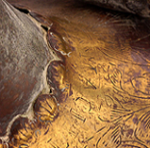
Da Chiesa e Camera
ceremonial splendor & hidden treasures
Music from the Emperor's court at Vienna and court of the princely bishop at Kremsier
Baroque Trumpet Ensemble Berlin (Trumpets, Timpani, Trombones, Strings & B.c.)
Bertali - Schmelzer - Rittler - Vejvanovsky - Biber
“Da chiesa e camera” – music in praise of god and simultaneously for the solemn representation and edification of the then almost godly potentates, reveals in a most unusually colourful instrumentation the Vienna and Kremsier court composers’ mastery in composition and offers a look at the advanced musical culture at the courts of Austrobohemia.
In the 16thcentury, Italy, the holy land of music, which, like no other, influenced European music history, was divided into many smaller and larger principalities. The will to outwardly represent class and competition between the centres of power brought out a cultural and musical diversity that was to swamp, so to say, Europe in the coming centuries. Courts and residences of interest to be named include the courtly estates of the popes in Rome, the doges in Venice, St. Petronio in Bologna, the Medici in Florence as well as the Gonzaga court in Mantua.
They all kept music ensembles that included the best singers and instrumentalists. The court orchestras served to represent the potentate in question, but apart from this profane function they also served sacral tasks such as the musical accompaniment for church service. Many of the compositions that have been passed down through the ages may be clearly assigned either to the profane or sacral domains. Still an overlapping in the use of musical pieces existed, and thus the suffix “da chiesa e camera” frequently appears; pieces which could be equally well applied for the use in either church or the “chamber ” (the worldly regions). Many of the rulers embodied both worldly and religious power. Thus, this all encompassing applicability of this music was very much in the interest of the powerful.
It is not Italian music, but rather the music that developed under strong Italian influence at the court of the emperors of the Holy Roman Empire of German nation in Vienna and at the court of the princely bishop (Fürstbischof) Karl von Liechtenstein-Kastelkorn at Olmütz and Kremsier, which fills our current programme. Many musicians, singers and composers lived at the court in Vienna, where even the emperor himself – both Leopold I. and Ferdinand III. – were active composers.
To be emphasized in particular are the names of Antonio Bertali, Allesandro Poglietti, Th. Albertini and Antonio Libertino. These artists had an enduring influence also on the style of their German speaking colleagues. The pieces that have been selected for our program are predominantly part of the extensive museum library of the Castle of Kremsier (today Kromeriz, Czech Republic). Up until the move of the episcopal seat to Olmütz in the year 1063, Kremsier itself was an episcopal city and since that time and on into the 19thcentury served as residencefor the princely bishops (Fürstbischöfe) of Olmütz (in 1777 Olmütz was granted the title of an archdiocese).
In terms of cultivating the music of Kremsier, the second half of the 17thcentury was a period of flourishing and of particular significance. Especially during the years of the princely bishop (Fürstbischof) Karl von Liechtenstein-Kastelkorn’s (1664 – 1695) episcopate no cost was too high to engage important artists and to have church and instrumental music on a quite opulent scale staged.
Apart from the permanently appointed musicians of the court orchestra at Kremsier, among which Heinrich Ignaz Franz Biber (1644 – 1704) and Pavel Josef Vejvanovsky (ca. 1640 – 1693) probably represent those most distinguished, numerous external masters were composing as commissioned by the bishops of Olmütz. Corresponding with the close personal and political relationships, lively musical exchange between Olmütz/Kremsier and the Emperor’s court in Vienna is verifiably taking place. As documented by the museum library, sacred music as well as orchestra and chamber music, in accordance with the needs of the locality, make up the main body of the artistic activities in the domain of the court music of Kremsier. Instrumentation of the ensemble is, both in terms of the number of summoned voices as well as in terms of the wealth of instrumental timbre and its wide potential for combination, unusually rich.
Often, in the compositional techniques that are employed to manage the extensive apparatus time and again, peculiarities of the later classic instrumentation appear to be anticipated. Even characteristics of the Bohemian-Moravian folk music found their way into the halls and chambers of the residence – be that in the use of folk music’s melodic patterns and harmonies or the integration of folk music instruments into the orchestra. Although Heinrich Ignaz Franz Biber certainly was the most distinguished among the musicians employed in Kremsier, little is known regarding his education and work there. Born in 1644 in Bohemia, he may have received his artistic training in Dresden or Prague; he may also have been studying with Johann Heinrich Schmelzer in Vienna. He took his leave from service with the princely episcopacy in 1670 under strange circumstances, leading to the assumption that the relationship to his superior was not the best, as he failed to return from an official trip to Tyrol. In 1673 he then found his permanent post at the Princely Episcopal Court of Salzburg, where in 1684 he was finally put in charge of the court orchestra.
Johann Plietzsch 2018